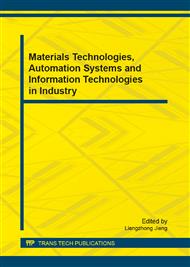p.606
p.612
p.618
p.623
p.632
p.638
p.642
p.649
p.654
Intelligent Control System for Intertidal Benthos Research Based on Internet of Things
Abstract:
A simulation system for intertidal zone environment that can be remotely monitored is proposed. The system is divided into the two parts of remote control center and environment simulator, which are interconnected through wireless network technology. The remote control center performs remote monitoring through upper machine software, while the environment simulator can simulate natural environments such as ocean tides, water temperature and light illumination in different types of intertidal zones. Users can change and access the environmental parameters and data of the environment simulator by making instructions at the remote control center. A stable system is realized in accordance with the design requirements, and actual tests show that main features of the simulated natural environment in intertidal zones are very close to actual environment.
Info:
Periodical:
Pages:
632-637
Citation:
Online since:
August 2013
Authors:
Price:
Сopyright:
© 2013 Trans Tech Publications Ltd. All Rights Reserved
Share:
Citation:


